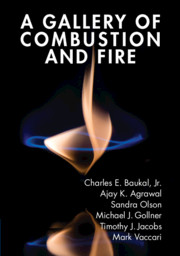Book contents
3 - Internal Combustion Engines and Gas Turbines
Published online by Cambridge University Press: 17 June 2020
Summary
There are only so many technologies and devices that have the same type of impact as that of the internal combustion (IC) engine. Its ubiquitous nature pervades our everyday life, many times without us even realizing it. Whether it be the spark-ignited engine driving our vehicle, the compression-ignition engine hauling food to our local grocery store, the jet engine we hear flying 38,000 feet overhead, or the gas turbine powering the laptop screen from which we read this article, internal combustion engines are quite literally intricately and irreplaceably woven into our daily lives. The internal combustion has taken on many different forms throughout its long, greater than 150-year history, but combustion has always been one of its few constants. Indeed, combustion is even in its name and helps differentiate it from other thermodynamic work devices such heat engines and fuel cells.
- Type
- Chapter
- Information
- A Gallery of Combustion and Fire , pp. 55 - 73Publisher: Cambridge University PressPrint publication year: 2020
References
Reference
References
The top portion of Figure 3.13 was published previously in:
An appropriate reference for the discussed stabilization of the flame spread is:
Reference
Similar images were published in:



